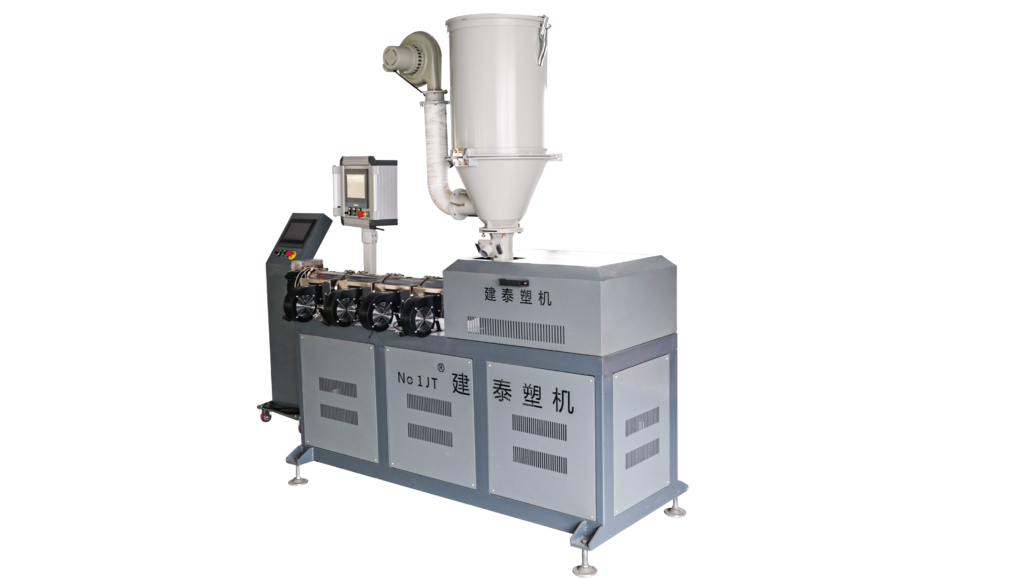
The twin-screw extruder is a type of machinery equipment commonly used in many manufacturing industries nowadays, primarily for the processing of extrusion molding. It excels in the processing it employs and offers advantages over traditional extruders. So, what are its application scenarios?
Production of Masterbatches
A mixture of plastic pellets and a high proportion of additives constitutes a masterbatch. Additives include pigments, fillers, and functional additives, which are often in powder form and prone to clumping. The twin-screw extruder is a key piece of equipment in the masterbatch production line, used for the homogenization and dispersive mixing of additives within a polymer matrix.
Compound Modification
It provides excellent mixing performance between the matrix and additives, fillers, and reinforcing materials. Glass fibers are important reinforcing materials, but other fibers can also be combined with polymer carriers. By adding fibers to polymers, materials with high strength and impact resistance can be obtained, while also achieving weight reduction and cost savings.
Venting
Due to the intermeshing of the two screws, the shearing process applied to the material at the intermeshing point continuously renews the surface layer of the material, enhancing the venting effect. This makes the twin-screw extruder have better venting performance than a vented single-screw extruder. In the venting section, large-pitch screw elements are used, and a ring dam or reverse screw element is often employed between the first metering section and the venting section to reduce pressure. The melt that passes over the ring dam enters the venting section, where the pressure is released, allowing gases to escape.
Reactive Extrusion
Reactive extrusion is a special process where monomers undergo polymerization during the extrusion process. The twin-screw extruder, with its excellent mixing performance, is particularly suitable for reactive extrusion. Liquid raw materials are added to the twin-screw extruder in a certain ratio, and polymerization occurs under the action of mixing and intermeshing. The excess reaction heat is dissipated through the screw barrel. At the outlet, a gear pump is typically used to directly feed the product into a water ring pelletizer for pelletization.
Direct Extrusion
Nearly 95% of twin-screw extruders are used for the production of granular products such as mixing, devolatilization, and reactive extrusion, where dimensional stability of the product is less critical. The twin-screw extruder can also combine mixing and extrusion molding, using specific dies and appropriate downstream equipment to produce products efficiently, such as films, sheets, and pipes. Direct extrusion eliminates the need for cooling and pelletization, as well as reheating and melting, thus saving energy throughout the entire processing process.



